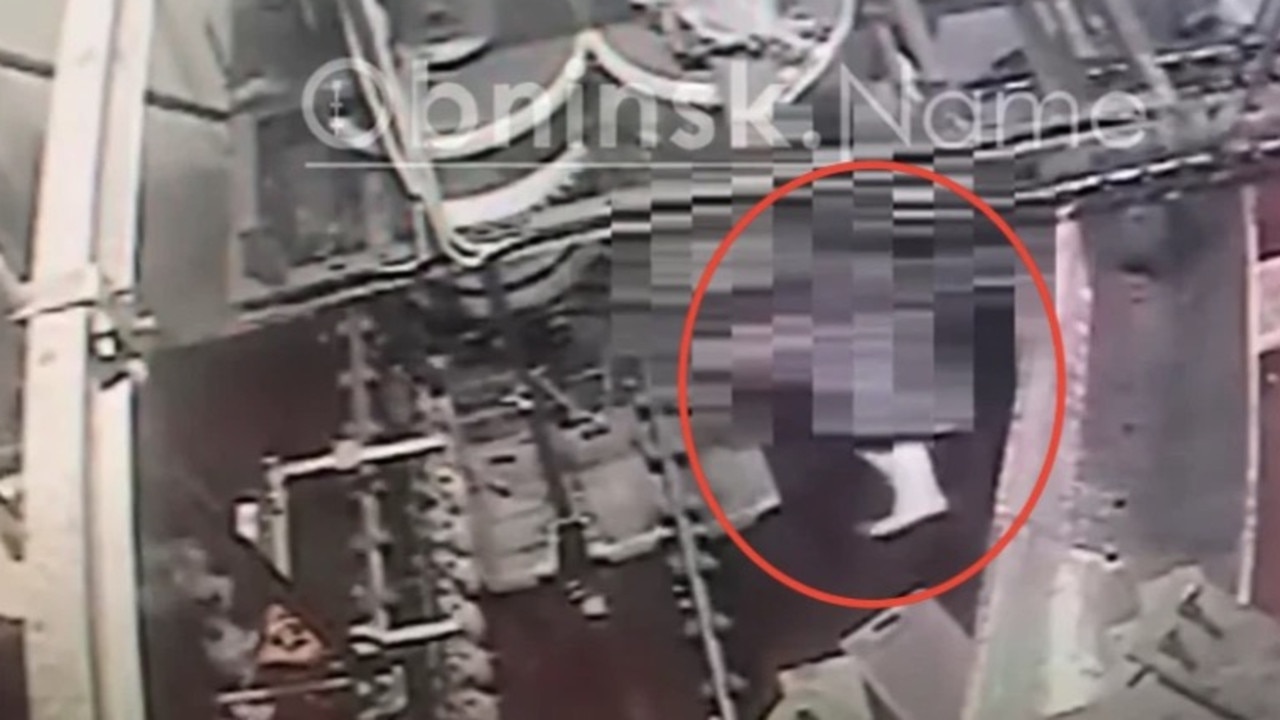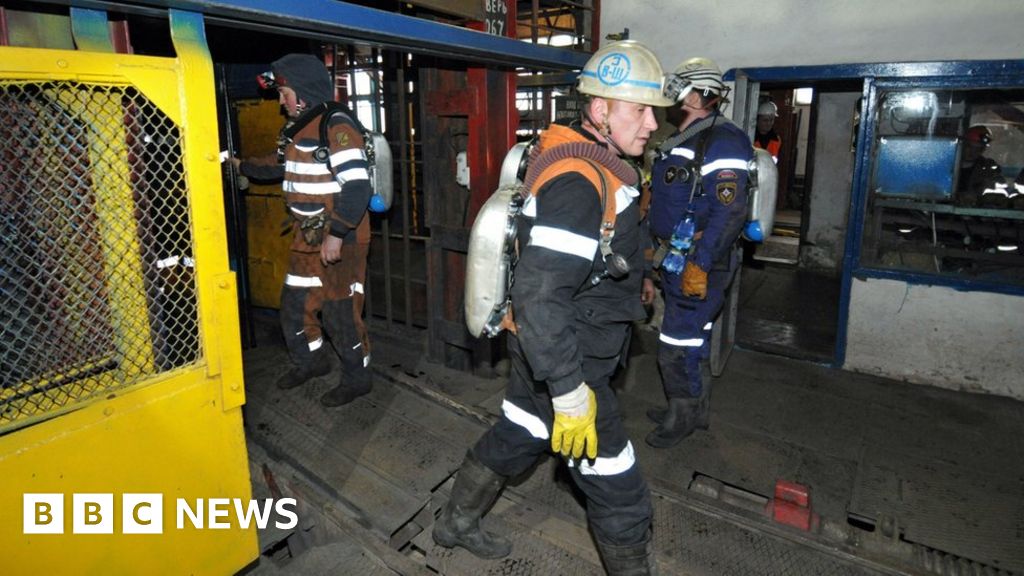The Russian Lathe Incident: A Stark Reminder Of Workplace Safety Imperatives
Could a single moment of negligence obliterate the meticulously crafted edifice of experience, leaving behind a landscape of irreparable damage? The catastrophic incident involving a Russian lathe in January 2021 serves as a stark and unflinching testament to the absolute necessity of unwavering vigilance in the workplace, demanding our immediate and undivided attention.
The manufacturing sector, a cornerstone of global economies, often finds itself operating within environments rife with potential dangers. These spaces, where raw materials are transformed into tangible goods, frequently house complex machinery capable of inflicting serious harm. The utilization of heavy equipment, especially in the realm of metalworking, inherently introduces a range of risks that necessitate unwavering attention to detail and strict adherence to established safety protocols. The incident, which occurred within a factory located in a significant industrial center, acts as a potent reminder of the urgent need for stringent safety measures and comprehensive training programs. This unfortunate event, which has sent shockwaves throughout industries worldwide, serves as a sobering illustration of the potential consequences that can arise from even the slightest lapse in judgment or a deviation from well-established safety standards. It underscores the fragile balance between human skill, mechanical prowess, and the ever-present threat of unforeseen accidents. The implications of such incidents extend far beyond the immediate physical damage, often inflicting lasting psychological trauma on those involved and impacting the wider community.
| Incident Overview | Details |
|---|---|
| Date of Incident: | January 2021 |
| Location: | Manufacturing Plant in a major industrial hub (Specific location undisclosed for privacy reasons) |
| Machine Involved: | Russian Lathe Machine (metal shaping and cutting tool) |
| Nature of Incident: | Workplace accident involving the lathe machine resulting in severe consequences (specifics undisclosed due to investigation). |
| Investigation: | Conducted by the investigative committee for the Republic of Tatarstan |
| Key Areas of Investigation: | Sequence of events, contributing factors, prevention of future incidents. |
| Consequences: | Significant damage to equipment and potential injury to personnel. |
The investigation, spearheaded by the Republic of Tatarstan's investigative committee, delved into the intricacies of the incident, aiming to establish a precise sequence of events. The committee's meticulous analysis sought to identify the contributing factors that led to the accident and determine the necessary preventative measures to preclude similar tragedies from occurring in the future. While the complete findings of the investigation are not yet fully public, the information gathered is critical to comprehending the entire picture. The insights gleaned from this investigation are paramount in formulating effective strategies to protect workers and bolster safety procedures. This incident, therefore, represents a crucial learning opportunity, offering a chance to learn from the past and build a safer environment for all.
- Port Huron Mi History Maps Facts Your Guide To The Blue Water Area
- Discover Iconic Canadian Female Singers In Music History
The incident's emergence and subsequent dissemination have ignited considerable concern and raised eyebrows among manufacturers worldwide, compelling a necessary reevaluation of existing safety protocols. The dramatic portrayal of the event, particularly through real video footage, serves as a pivotal moment for industry, highlighting the critical need for constant vigilance and a renewed dedication to worker safety. This shocking visualization has resonated throughout the industry, serving as a stark reminder of the potential dangers lurking within the industrial workplace. It demands that companies reassess their current safety measures, ensuring they are as robust as possible to protect the workforce. The ripple effects of such incidents are often far-reaching, affecting not only the individuals directly involved but also the overall productivity and reputation of the company.
The unsettling video footage, which has been widely circulated online, vividly demonstrates the devastating repercussions of industrial accidents. The swiftness and severity of the accident, as captured in the video, have served as a potent wake-up call, emphasizing the critical need for proactive safety measures and unwavering adherence to established procedures. This shocking visual underscores the urgent necessity for stringent safety protocols in environments where similar machinery is utilized. The raw and unfiltered depiction of the incident serves as a powerful reminder of the importance of prioritizing safety above all else. This emphasizes the need for comprehensive training, robust safety equipment, and a company culture where workers feel comfortable raising concerns about safety.
The Russian lathe incident has instigated a wave of apprehension, prompting a thorough examination of safety protocols across the manufacturing sector. It acts as a crucial catalyst for change, compelling industries to reevaluate their safety standards and proactively address any vulnerabilities that may exist. The impact of this event cannot be overstated; it serves as a constant reminder that safety is not merely a set of procedures but a fundamental philosophy that must be ingrained in every aspect of operations. It encourages companies to invest not only in equipment but in employee training and creating a culture of safety that prioritizes the well-being of everyone involved.
The details that have come to light reveal a series of unfortunate events that converged to cause the tragic accident. As more details emerge, the significance of understanding the incident's causes, consequences, and potential preventative measures becomes paramount. This includes a thorough analysis of the equipment involved, the training provided, and the safety protocols in place. The incident serves as a stark reminder of the critical need to take concrete steps to avoid similar tragedies from unfolding in the future. This is not just about preventing accidents; it is about protecting the lives and livelihoods of workers. It necessitates that companies are constantly seeking ways to improve their safety standards.
Russian lathes, known for their precision and efficiency, have long been trusted tools in the manufacturing industry. However, this incident has emphasized the crucial importance of thorough safety protocols and consistent maintenance, irrespective of a machine's reputation. No piece of equipment is impervious to malfunction, and it is the human factor, coupled with the application of rigorous safety measures, that safeguards against such incidents. The focus should be on ensuring that safety measures are in place and that operators are fully trained and aware of all potential risks. This includes routine inspections of machinery, regular maintenance checks, and ongoing safety training for all employees.
Industrial accidents like this one have implications that extend far beyond the factory floor. They affect the families of those involved, the reputation of the company, and even the perception of the industry as a whole. The manufacturing sector must now grapple with the challenge of restoring public trust while simultaneously ensuring that such incidents do not recur. In this context, companies must adopt a proactive stance, investing in technology and training that enhances worker safety. Furthermore, the incident raises questions about the adequacy of current safety regulations and whether they are sufficient to address the complexities of modern manufacturing environments. It also prompts discussions about the role of automation in reducing human error and enhancing workplace safety.
As industries around the world reflect on the Russian lathe incident, comparisons are inevitably drawn with other high-profile accidents in the manufacturing sector. For instance, the 2012 collapse of a garment factory in Bangladesh, which claimed over a thousand lives, highlighted the urgent need for stricter safety standards in developing countries. Similarly, the Deepwater Horizon oil spill in 2010 underscored the catastrophic consequences of neglecting safety protocols in high-risk industries. These incidents, though differing in context and scale, share a common thread: the importance of prioritizing safety over profit. In the wake of such tragedies, industries must adopt a more holistic approach to safety, one that considers not only the immediate risks but also the long-term implications of unsafe practices.
Public awareness of workplace safety has been significantly heightened by the widespread circulation of the Russian lathe incident on social media platforms. The video, which has garnered millions of views, has sparked debates among industry experts, policymakers, and the general public alike. This amplified visibility serves as a stark reminder of the importance of workplace safety. It is a warning that cannot be ignored. The visibility of the video highlights the urgent need for companies to ensure their safety standards are not only met but exceeded. In today's interconnected world, where information travels at the speed of light, companies must be transparent about their safety practices and willing to adapt to changing circumstances.
One of the most significant outcomes of the Russian lathe incident has been the renewed emphasis on safety training. Industries have recognized the importance of equipping workers with the practical skills and knowledge necessary to operate machinery safely. This includes hands-on training, regular refresher courses, and the integration of new technologies that enhance safety. For instance, virtual reality simulations are increasingly being used to train workers in high-risk environments, allowing them to practice emergency procedures without exposing them to actual danger. Additionally, companies are investing in wearable technology that can monitor worker health and alert supervisors to potential hazards in real-time. These advancements represent a shift towards a more proactive approach to safety, one that prioritizes prevention over reaction.
Looking ahead, the manufacturing sector must continue to evolve its safety practices in response to emerging challenges. The rise of Industry 4.0, characterized by the integration of digital technologies into manufacturing processes, presents both opportunities and challenges for workplace safety. While automation can reduce human error and enhance efficiency, it also introduces new risks that must be carefully managed. Companies must ensure that their safety protocols are updated to address these new challenges and that workers are adequately trained to operate in this rapidly changing environment. Furthermore, collaboration between industries, governments, and research institutions is essential to developing innovative solutions that enhance workplace safety.
The Russian lathe incident serves as a sobering reminder of the critical importance of workplace safety. It underscores the need for industries to adopt a comprehensive approach to safety, one that encompasses training, equipment, and culture. As the manufacturing sector continues to evolve, the lessons learned from this incident will undoubtedly shape the future of workplace safety. By prioritizing safety above all else, companies can protect their workers, enhance productivity, and maintain public trust. In doing so, they will contribute to a safer, more sustainable future for all.
For more information on workplace safety and the Russian lathe incident, visit the official website of the Republic of Tatarstan's investigative committee here.



Detail Author:
- Name : Prof. Bridie Jones
- Username : evangeline74
- Email : ernser.ned@hodkiewicz.info
- Birthdate : 1994-10-18
- Address : 177 Farrell Keys Lake Rebeca, MT 11236
- Phone : +19175592500
- Company : Kertzmann, Lemke and Turner
- Job : Recreational Vehicle Service Technician
- Bio : Aut ab ipsum et et delectus sed earum iste. Labore rem ut quaerat. Eum placeat impedit asperiores provident ut. Eligendi voluptatem quae accusantium quo assumenda recusandae.
Socials
facebook:
- url : https://facebook.com/hildegard.donnelly
- username : hildegard.donnelly
- bio : Omnis sunt ullam voluptatem. Et repellat numquam repudiandae accusantium qui.
- followers : 2078
- following : 1081
tiktok:
- url : https://tiktok.com/@hildegard_real
- username : hildegard_real
- bio : Sed amet fuga voluptatem eaque. Tempora dolores nihil perferendis sit iusto.
- followers : 3704
- following : 582
twitter:
- url : https://twitter.com/hdonnelly
- username : hdonnelly
- bio : Dignissimos nisi ab qui velit hic qui non. Ut voluptatem animi et esse. Cum officiis et vel aut amet dignissimos in. Quae aut ipsam illum labore sit minima.
- followers : 1920
- following : 1853
instagram:
- url : https://instagram.com/donnelly1989
- username : donnelly1989
- bio : Et rerum expedita aliquid in dolor. Ipsum aut mollitia architecto et eum qui doloremque.
- followers : 6648
- following : 2946
linkedin:
- url : https://linkedin.com/in/hildegard_official
- username : hildegard_official
- bio : Ut necessitatibus numquam suscipit sunt quo.
- followers : 1183
- following : 344